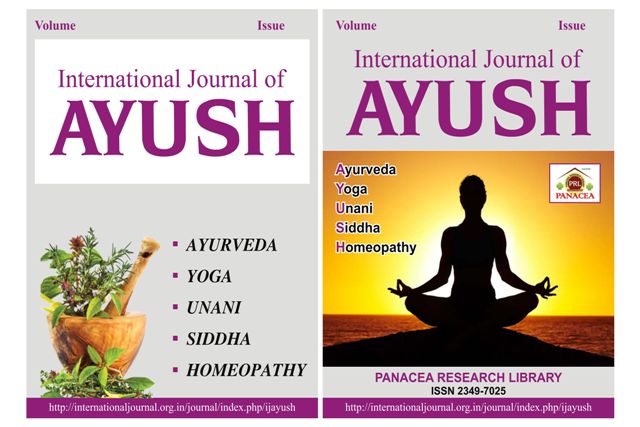A CRITICAL DRUG REVIEW OF PATHAMOOLA (CISSAMPELOS PAREIRA LINN.)- CLASSICAL AND MODERN PERSPECTIVES
DOI:
https://doi.org/10.22159/prl.ijayush.v14i09.1507Abstract
Background: Pathamoola (Cissampelos pareira Linn.) is an important medicinal plant in Ayurveda. Classical texts describe it for its Vedanasthapana (analgesic), Shothahara (anti-inflammatory), and Jwaraghna (antipyretic) properties. Modern pharmacological research has highlighted its roles in immunomodulation, antimicrobial action, and reproductive health. Bridging classical insights with contemporary evidence allows a holistic understanding of its therapeutic value. Aim: To critically review Pathamoola from classical and modern perspectives with reference to its pharmacological and therapeutic significance. Objectives: To analyze classical references of Pathamoola from Brihattrayi and Nighantus. To explore its morphological, pharmacognostical, and phytochemical aspects. To evaluate pharmacological studies and modern evidence supporting its clinical use. To provide integrative insights for future research and therapeutic applications. Materials and Methods: This review is based on classical Ayurvedic texts, commentaries, and lexicons, along with published research articles retrieved from PubMed, AYUSH Research Portal, and peer-reviewed journals. Morphological, phytochemical, and pharmacological data were critically examined and compared with classical descriptions. Results: Classical literature consistently supports the role of Pathamoola in conditions such as Jwara, Shotha, Vata-vyadhi, and Stree roga. Modern research validates its anti-inflammatory, analgesic, antioxidant, hepatoprotective, and uterotonic activities. Phytochemical studies reveal alkaloids like cissamine and hayatinin, contributing to its pharmacological effects. Conclusion: Pathamoola demonstrates strong therapeutic potential, with substantial alignment between Ayurvedic wisdom and modern pharmacological findings. Integrative exploration underscores its relevance in chronic inflammatory, infectious, and reproductive disorders, while highlighting the need for clinical validation through standardized research.



